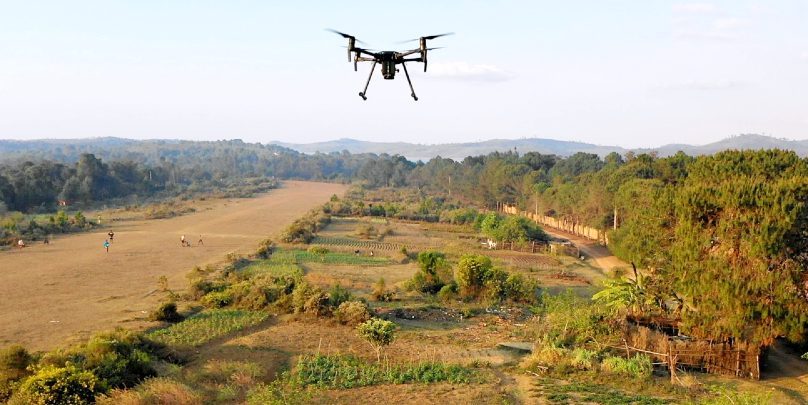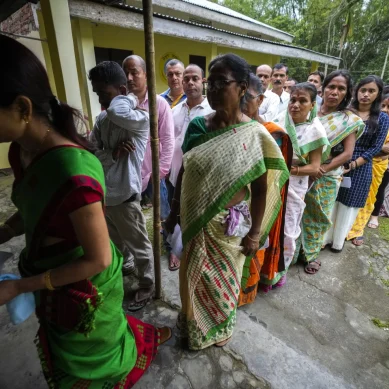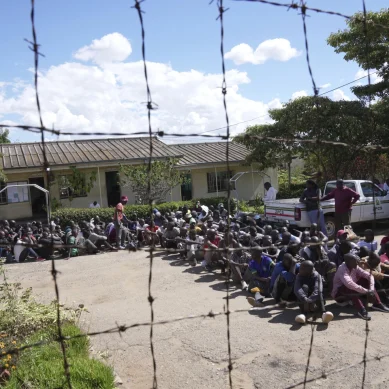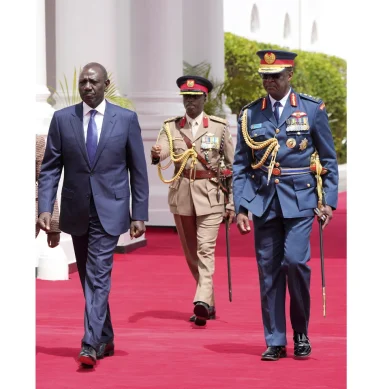
The risk of militarisation of drone technology in Africa represents a new asymmetric tool, which experts now fear nonstate groups may deploy to extend the reach of their coercion, reshaping the African battlefield.
A study has listed Kenya in East Africa, Nigeria in West Africa, which have in recent years experienced spates of terrorist attacks and inter-ethnic conflicts, countries under the spell terrorism and it is predicted they will witness uncontrolled rise in militarisation of the drone technology.
The African Centre for Strategic Studies, which also examined at conflicts in the Middle East, says, “The global commercial drone market is forecast to reach $43 billion by 2024 with South Africa, Nigeria and Kenya expected to be the biggest players in Africa.”
In addition to business uses, drones are increasingly being used for humanitarian purposes. Drones also hold much scope for expansion into other areas such as maritime security and border policing operations.
The al Qaeda-supported al Shaabab militia in Somalia is on the radar of the Kenya security forces as is Boko Haram in Nigeria. The al-Qaeda cells have also in the recent years made inroads in Mozambique, Uganda and the Democratic Republic of Congo (DRC).
“In Somalia, private security contractors have described how in the past year the violent extremist group al Shabaab has deployed UAS for surveillance purposes. Although eyewitness accounts are hard to verify, Colonel (retired) David Peddle, a former military service member in South Africa and the UK with ongoing contact in Somalia, confirmed that armed nonstate actors have been using UAS for surveillance purposes and believes it will only be ‘a matter of time’ before the deployment of ‘swarms’ or clusters of offensive drones in Africa, given their accessibility and relatively low-cost,” according to the study published early this month.
Despite the threat posed by militarisation of the drones, this area of technology is yet to attract the interest and attention security experts, according to the research findings.
The ACSS research found, “Yet the unintended consequences of commercial or hobbyist drone proliferation and its impact on African security is an area that has attracted little research. The announcement that a European Union training mission will train the Mozambican army to use drones to track militants’ movements is testament to a growing drone ecosystem in Africa, with both military and customized commercial UAS sitting alongside hobbyist or shop-bought drones.”
In late 2016, the Islamic State (ISIS) reached an important milestone during the battle to secure the city of Mosul in Northern Iraq. In what is thought to be the first ever recorded use by violent nonstate actors in theatre, ISIS deployed a weaponised unmanned drone or Unmanned Aerial System (UAS), it says.
ACSS reports that, with a range of about a mile and a half, had been built and loaded with explosives and detonated in a densely populated urban battlefield.
“The impact was both physical and psychological. Civilians found themselves trapped deeper in the city while Kurdish Peshmerga and Shi’ite militias joining Iraqi government troops, struggled to regain control. Since that time, the use of UAS by violent nonstate actors has been observed in other conflict settings including Syria, Yemen, and Ukraine,” it says.
ACSS says the use of drones in the middle east conflicts is a motivation of nonstate groups in Africa to deploy the same in the bloody fight for control natural resources.
The number of active conflicts in Africa is yet to be established but the United Nations has previous estimated it to be anything close to 100, spread out the continent. However, Central Africa claims the lions share, with eastern Africa and West Africa accounting a sizeable number.
“Within Africa, the potential for insurgent groups to emulate such tactics as those observed in Iraq, has received little attention. There has been some focus on Libya with proxy supporters of both the Libyan Arab Armed Forces coalition of militias led by Khalifa Haftar in the east of the country and the Government of National Accord supplying drones for surveillance and long-range strategic strikes. However, it is the recent escalation in hostilities in the Cabo Delgado Province of northern Mozambique that has raised the spectre of violent nonstate actors in Africa deploying this technology,” says ACSS report.
Mozambique’s Interior Minister Amade Miquidade reported that UAS have been deployed by militant Islamist groups in Cabo Delgado Province where a Southern Africa Development Community (SADC) stabilisation force has recently been authorised. Mozambique’s armed forces have been battling these militant groups who operate under the name of Ahlu Sunnah Wa Jama’a or Ansar al Sunna since 2017.
“Informal acquisition and enhancement of commercially available or so-called “hobbyist” drones are also a trend Africa may witness more.”
The tensions are rooted in long-established local grievances and form part of the ongoing battle to control an area that is home to Africa’s largest liquefied natural gas pipeline project. During the attacks in late March and early April 2021 that targeted, among other areas, the strategically important town of Palma, Miquidade claimed that the militants used drones to assist in precision targeting.
This aligns with other unverified reports by private security companies operating in the region that small drones have been deployed by armed nonstate actors for surveillance purposes.
Jasmine Opperman, a former South African intelligence analyst, observed that “If we look at the ease with which [the insurgents] are getting weapons and mounting attacks on the military, I will never underplay the possibility that they start making use of more technologically advanced capabilities, and with that I include drones.”
She added that “If you can bring in cellphones by the hundreds through illegal smuggling routes, what is preventing them from bringing in drones?” The Mozambican experience mirrors other reports emerging from Africa.
Libya has also emerged as a technological testing ground for similar aerial assets, supplied by external forces such that UAS are now a mainstay of the Libyan conflict. But informal acquisition and enhancement of commercially available or so-called ‘hobbyist’ drones are also a trend Africa may witness more and more.
Across the Bab al Mandab Strait, Yemen has also reported the use of similar aerial systems by Houthi rebels, where they have been deployed as strike platforms to mount attacks against energy installations.
The use of UAS represents a new iteration of digital technology. The rapid rollout of mobile- and smartphone technology has seen militants in remote settings such as the deserts of Mali detonate IEDs using mobile phones where in the past they would have relied on trip wires. Smartphone applications used to pilot drones present both an opportunity and a threat.
Although drone technology is largely used for positive purposes, the possibility for individuals to build drones with smartphones and open-source software will accelerate, and the results may be destabilising. In short, drones are likely to be an integral part of future warfare in Africa.
To date, most of the research on the use of UAS by violent nonstate actors has been conducted outside of Africa. However, analysts believe the experience in the Middle East where drones have been weaponized “unlocks a genie of sorts, as [ISIS] demonstrated what was possible with a little bit of sinister engineering.”
They can also be quickly brought to scale. When Iraqi forces took major parts of Mosul back from ISIS in November 2016, they found an ISIS workshop dedicated to weaponizing drones. Such was the ability to scale up that, in the spring of 2017, there were between 60 and 100 aerial ISIS drone strikes each month across Iraq and Syria.
- A Tell report











